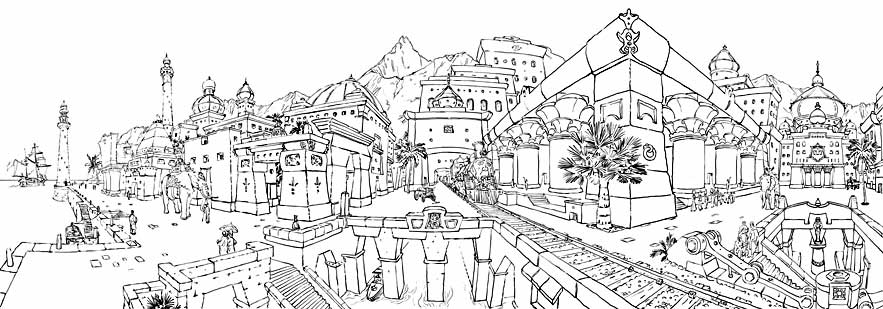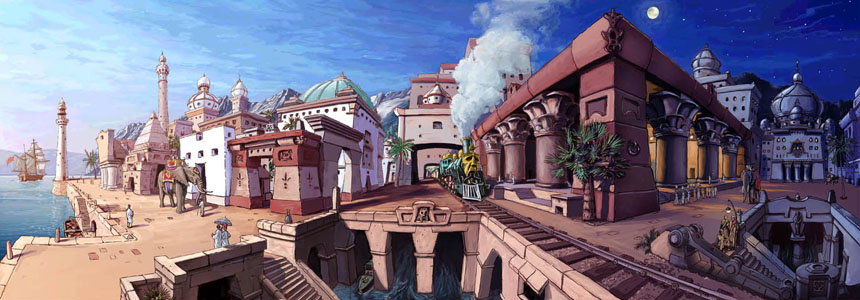This is the second of an occasional series of posts about perspective. Many people believe that geometrical perspective, single point, two point and three point are actually an accurate representation of what we see. Cameras see in this way after all so it must be right mustn’t it? Well actually no, it is a compromise as are all methods of making our very three dimensional world fit conveniently on a flat surface. Here I am going to deal with a very old problem that perplexed Renaissance artists as they struggled to find solutions to the problems of illusory painting. Vredeman de Vries and other artists published learned books full of geometrical construction but certain problems seemed impossible to resolve. Columns were a big feature of architecture of the time and they often occurred in long arcades, perfect fodder for the perspective method you would think. However it turns out that round columns are exactly the type of object that causes the neat geometrical rules to fall apart. What I intend to do here is highlight the issues as clearly as I can and then point the way to the various solutions that later artists arrived at. It is a sad fact that all modern books on perspective that I have seen do not even seem to realise that the issues are there, let alone giving any practical advice to overcome them.
.

Here we have a plan view of a simple set up consisting of a row of columns, a cube and a green triangle which marks where our viewer is standing. Below is what we get if we construct using one point perspective what that viewer would see.
.

Well here we are, at first glance it seems sort of OK. Look more closely though and we have some problems. In our plan we can clearly see that all the columns are the same size. That does not however seem to be the case in our perspective projection. The column on the far left is a lot wider than the one straight in front of us. Worse when we look at the plan the far left column it is actually further away from us and should appear smaller not larger. Something is plainly awry. Looking more closely still the base of the far left column seems oddly tilted. This is exactly the result a camera would give on a fairly wide angle lens giving a viewing angle of about 70 degrees. So when you wonder why you looked so fat in that group photo this is the cause and in future you would be best to make sure you are in the middle of the line! Lets take another case.
.
 Here is the plan of a simple set up, as before the green triangle marks our viewpoint. We often get rows of things receding from us, looking down a romanesque church nave would be an example. Below is how traditional two point perspective renders the scene.
Here is the plan of a simple set up, as before the green triangle marks our viewpoint. We often get rows of things receding from us, looking down a romanesque church nave would be an example. Below is how traditional two point perspective renders the scene.
.
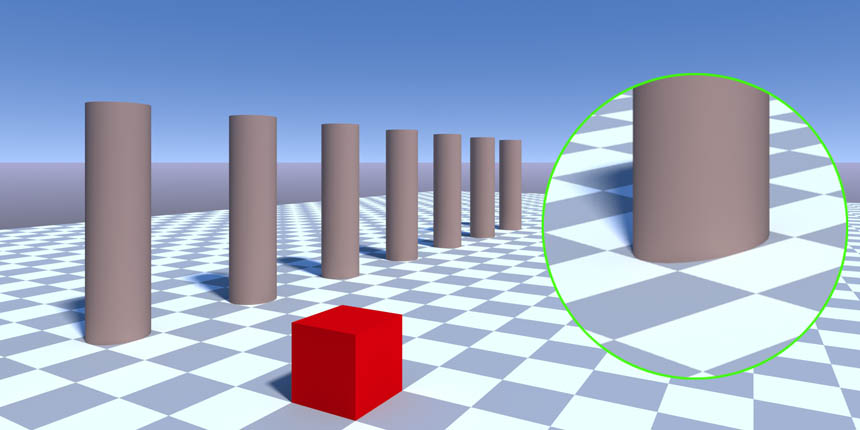
Once again at a quick glance it all seems well but a closer one shows that the left column again shows problems. These are clearer still when we isolate that part as in the green circle. There is a weird tilt which is plainly not how we would really see the base of such a column. If you then tried to add capitols and bases you would find it very hard to get them believable. Below is an example from an old perspective manual by Jan Vredeman de Vries printed in 1599.
.

As you can see the problem is still present, and remains over the centuries up to the present day. This is because there is no right way to solve this problem. Whatever we do it will still be wrong. The trick is to be pragmatic and make the unavoidable departures from how we really see the world as subtle as possible. Lets look at the dilemma more closely.
.
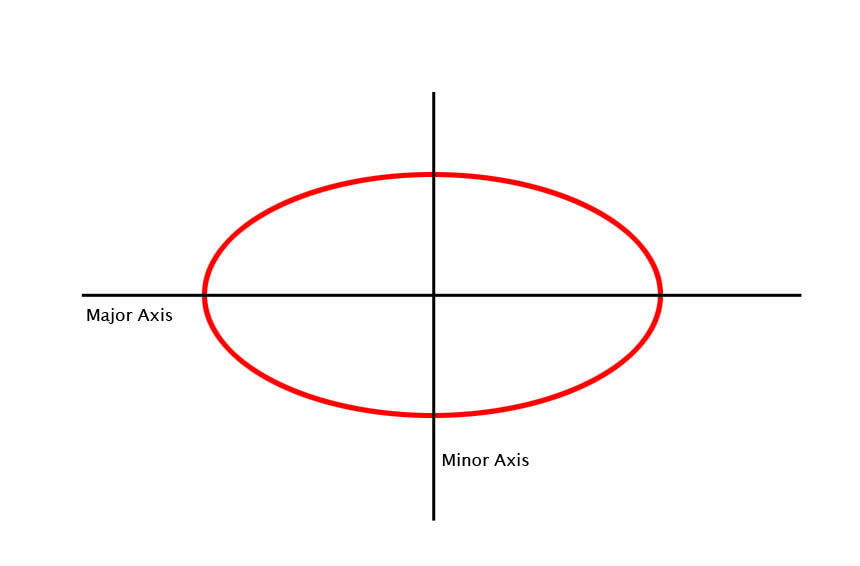
Here is our old enemy the ellipse, I won’t go into how to construct one as there are many methods freely available on the web if you are interested. In the real visual world as seen by our eyes when, for example, we look at a coffee mug on the table or any circle that is parallel to the ground, the major axis of the resulting ellipse is always parallel with the horizon line. Try it, put a plate on your table and slide it around. But cameras and 2 point perspective construction produce ellipses that have the major axis tilted. It is this that produces the odd distortions. All we can do is come up with a compromise, a sleight of hand adjustment that is not perfect but improves the believability of our drawing.
.

Here is a circle constructed in two point perspective. The problem is that cross and the ellipse with it need to be parallel to the horizon line to look right to the eye. Yet at the same time it needs to fit into the blue box.
.
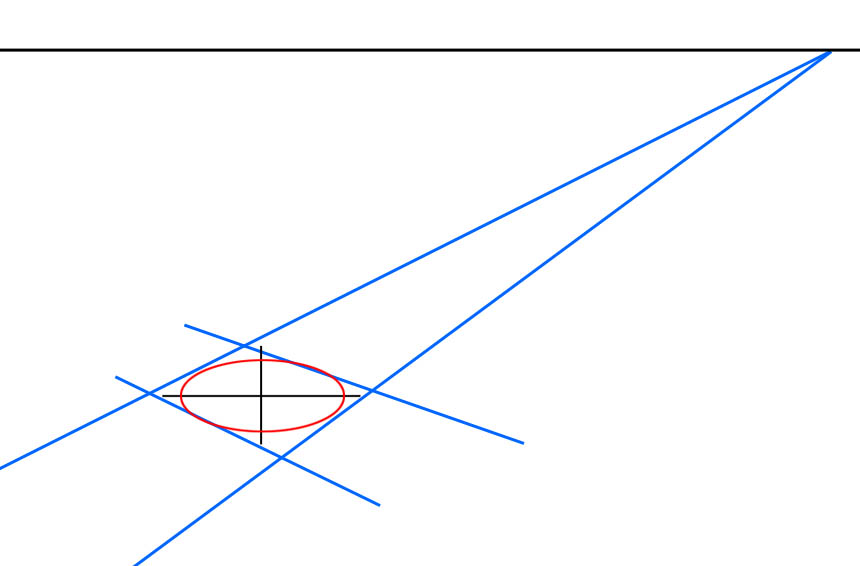
Here is our compromise. The winners are the ellipse which is now properly aligned to the horizon and also a wee bit narrower to correct for the first problem of “fattening”. The losers are the chequer board floor on to which the column no longer perfectly fits. But as you see the mis fit is quite small and far less worrying to the eye in my opinion. Below is the correction applied.
.
It would be easy to tweak the lines of the floor to make the adjustment less noticeable, but I have left it alone as it shows where the changes have been made. Returning briefly to the very first example of the over wide columns left and right one solution here is to make all of the columns the same as the central one. Again a compromise that may throw up other problems but a good starting point. Chequer board floors of course make the whole problem worse. When I was designing for television advertising I once put a chequered floor into a shot that was to be filmed on a wide angle lens. The cameraman was not at all happy and the Director made me paint it out! The next instalment on perspective matters will be how to place arches, doors and windows into buildings in a scene by a few rule of thumb tricks.










